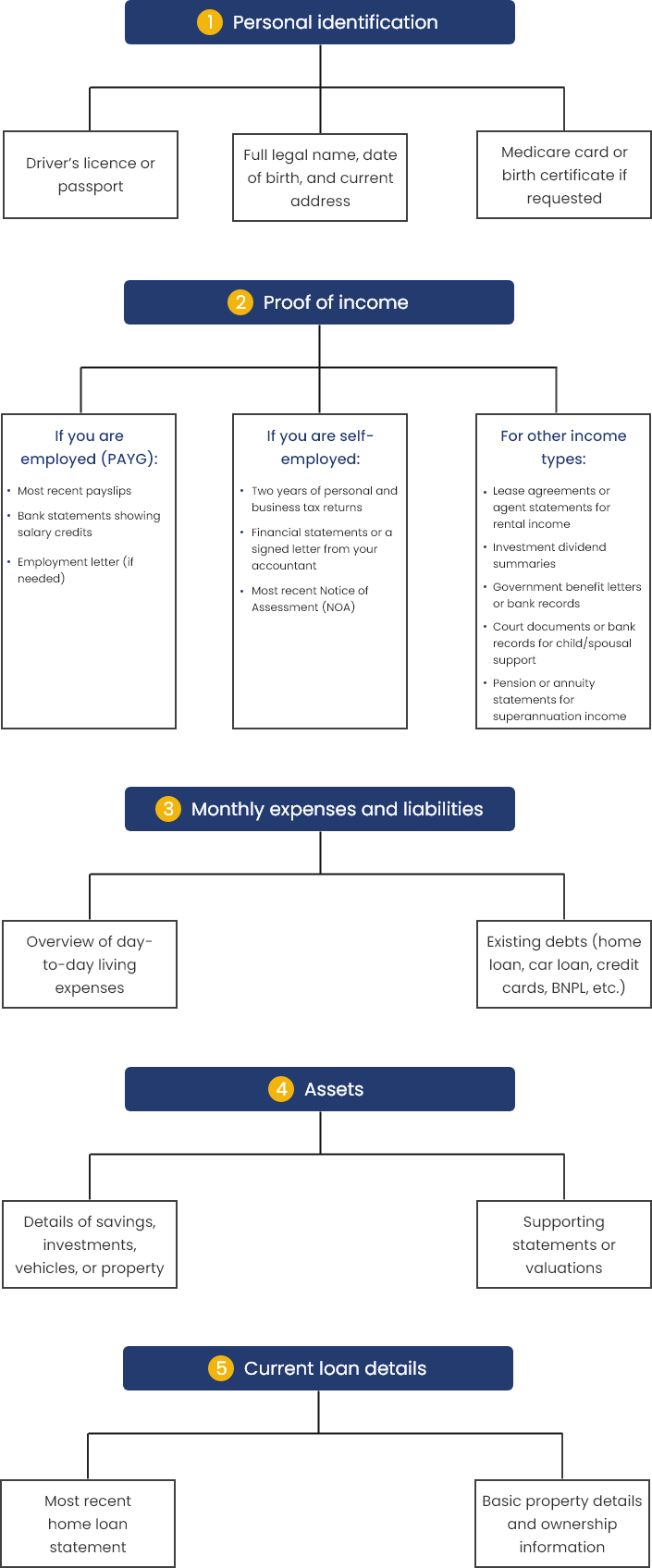Home loan refinancing process: A step-by-step guide
Introduction
Many homeowners were hoping for interest rate relief in July, but the Reserve Bank chose to keep rates unchanged. While that outcome may have been disappointing, it has not stopped borrowers from exploring other ways to improve their loan situation.
One of the most common steps being taken is refinancing, which allows borrowers to review their current loan and consider better alternatives.
Refinancing activity, which had slowed during 2024, picked up again in early 2025 as more borrowers acted on this option. In the March 2025 quarter, 119,491 new loans were settled. This was a 5.4 percent increase compared to the same period last year.
This increase shows that many homeowners are actively seeking more suitable loan terms rather than waiting for the next rate cut. With cashback offers, reduced fees, and more competitive rates available, refinancing is a timely option worth exploring.
If you have not reviewed your home loan in recent years, now could be a good time to explore what else is available. In this blog, we outline the refinancing process in six simple steps to help you understand how it works from beginning to end.
Key takeaways
- Begin by clearly defining your reason for refinancing, as it guides every step that follows.
- Make sure you understand all potential costs, including lender fees, government charges, and insurance.
- Prepare all necessary documents early to keep the application process smooth and fast.
- Review the loan offer carefully and clarify anything that is unclear before you accept.
- Professional guidance takes the stress out of refinancing and helps you make better decisions.
The 6-step process to refinance your mortgage
The 6 steps below simplify the home loan refinance process, giving you a clear view of what to expect and how to approach each stage with the right mindset and preparation:
Step 1: Define why you are refinancing
Refinancing your home loan starts with identifying your primary reason for making the switch. Common motivations include:
To secure a lower interest rate: A better rate can reduce your repayments, save you money over time, and potentially help you pay off your loan faster.
To access features your current loan doesn’t offer: Newer loans may include features like offset account and redraw facility, flexible repayments, or the ability to set up a split loan.
To adjust your loan after a fixed term ends: If your fixed rate is expiring and your loan is about to revert to a higher variable rate, refinancing gives you the chance to find a better option.
To consolidate other debts: You might want to roll personal loans, credit cards, or car loans into your mortgage to simplify your repayments and possibly lower your interest costs.
To access equity in your home: If your home’s value has increased or you have paid down a portion of your loan, refinancing may allow you to use your home equity for renovations, investments, or other large expenses.
Step 2: Know the costs that come with refinancing
Refinancing your home loan involves several costs, and they can vary depending on your lender, loan type, and state. While many are one-off charges, they can add up quickly. The key is to understand them upfront so you can weigh the short-term costs against any long-term savings.
Here are some of the most common refinancing costs:
- Discharge cost – charged by your current lender to close your existing loan.
- Break cost – applies if you are ending a fixed-rate loan before the term finishes.
- Application cost – a setup charge from your new lender to start the loan.
- Valuation cost – covers an updated property valuation by your new lender.
- Settlement cost – pays for finalising the new loan, including paperwork and processing.
- Government registration cost – includes mortgage registration and title transfer fees
- Lenders Mortgage Insurance (LMI) – required if your deposits are less than 20% of the property value.
Check your potential savings
Use our mortgage switching calculator to compare your current loan with other options and see if refinancing could help you save.
Step 3: Apply for the new loan
After confirming your reason to refinance and reviewing the potential costs, the next step is submitting your application. This involves providing documentation such as:

Preparing these documents in advance will help you avoid delays and ensure your application moves through efficiently.
Step 4: Get loan approval and review the offer
Submitting your application with all required documents triggers the lender’s assessment process. They will review your income, credit history, current debts, and property value to decide if the loan meets their criteria.
As part of this process, the lender will also assess the current market value of your property to calculate your loan-to-value ratio (LVR). This ratio helps determine how much risk the lender is taking on.
If your LVR is less than 80%, your application can proceed without mortgage insurance. However, if it exceeds 80%, you’ll likely need to pay Lenders Mortgage Insurance (LMI) even if you paid LMI on your original loan. LMI is not transferable between lenders, so it becomes a new cost if your LVR is too high.
If your application is approved, the lender will issue a loan contract outlining key terms, including:
- The approved loan amount
- Interest rate (fixed, variable, or split)
- Repayment structure and frequency
- Any features, such as redraw or offset
- Ongoing fees or early repayment terms
Take time to review the offer carefully. If anything seems unclear, ask your broker or lender before signing. Once satisfied, accepting the offer moves you one step closer to settlement.
Step 5: Finalise the discharge of your old loan
With your new loan approved and accepted, it’s time to officially wrap up your old one. This process is known as discharging your existing mortgage.
Your new lender will typically coordinate with your previous lender to manage this handover. However, you may still need to complete and sign a discharge authority form to formally request the release of your old loan.
This step confirms that you are refinancing and gives permission for the current mortgage to be paid out and closed. The old lender will calculate the final payout figure, which includes any outstanding balance along with accrued interest or applicable fees.
In some cases, a discharge or termination fee may apply, so it’s worth checking your current loan terms ahead of time. Once this is finalised, your previous loan is closed, and your new lender prepares for settlement.

Step 6: Settle the new loan and begin repayments
Settlement marks the completion of your refinancing process. At this stage, your new lender pays out your existing loan, and the legal ownership of the mortgage is transferred to them.
You will receive confirmation of the settlement date along with your new repayment details. This includes the start date for your repayments, how much you will pay, and how often those payments will be required.
Once the loan is active, you can begin using the features that came with it.
It is a good time to set up internet banking for your new loan account and review the setup to ensure everything is in order. With your new loan in place, you can now focus on making the most of your repayment plan and reaching your financial goals sooner.
Final thoughts
Refinancing can seem overwhelming at first, especially with several steps and details to work through. But once you understand how the process unfolds, it becomes easier to manage and more approachable.
Each stage, from reviewing your current loan to settling the new one, plays an important role in making sure the change suits your needs. If you would like expert support along the way, ZedPlus is here to assist.
Speak with one of our lending specialists, who will guide you through the process and help you make a well-informed decision.



